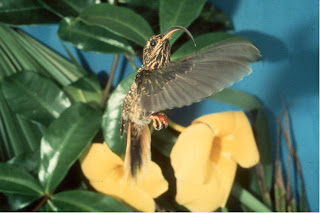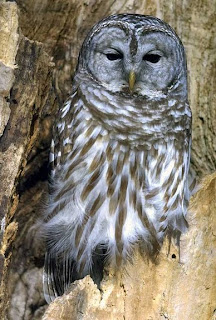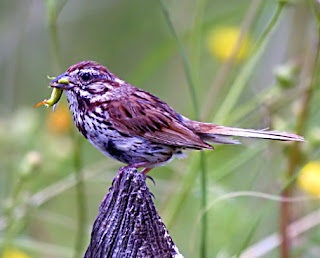Territory
Territory is any defended area beyond individual distance (usually against conspecifics)--vs. home range, which is an area an animal covers but does not defend. Some texts give up to seven types of territory, but I am content with four:
TYPE A: multipurpose mating, nesting and feeding resources contained in territory--MOST LAND BIRDS. Food evenly distributed; nests usually in center of territory.TYPE B = mating and nesting but not feeding--starling and most seabirds. There is a gradient from B to C. Food not in nesting area (starlings nest in trees but feed in fields). Or food is or in clumps of fruits or seeds.
TYPE C = nesting only, not mating; only nest area defended--MOST ANY COLONIAL BIRD, LIKE PELICANS or BARN SWALLOW. Nesting sites limited, for example, Kittiwakes.
TYPE D = mating only = lek--RUFFED GROUSE, SAGE GROUSE , MANAKINS, or HERMIT HUMMINGBIRDS. This is the least understood territory type. Nest sites not limiting so perhaps females limiting.
What forces determine what type of territory a species maintains? (Territory types can vary: Song Sparrows in British Columbia feed outside their territories where they have an abundant food source; otherwise they normally have Type A territories).
Long-tailed Hermit




Comments
Post a Comment